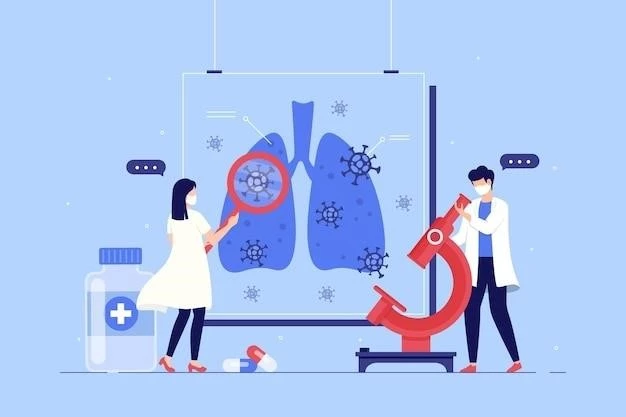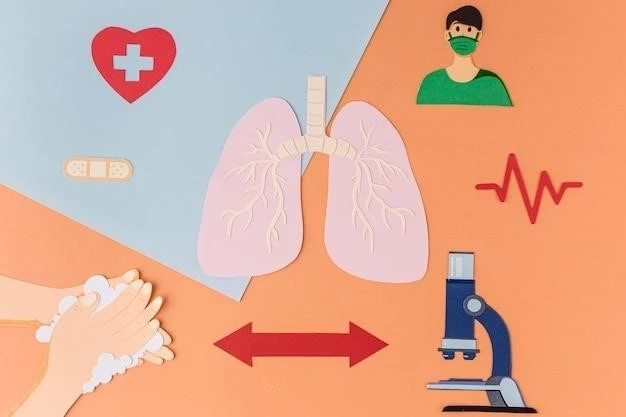Introduction to Pneumoconiosis
Pneumoconiosis is a lung disease caused by inhaling dust particles‚ leading to scarring and breathing issues. Learn more about its types and risks.
Pneumoconiosis is a group of lung diseases caused by inhaling mineral dust particles over time. It can be classified into fibrotic and nonfibrotic types based on the presence or absence of fibrosis. Common examples of fibrotic pneumoconiosis include asbestosis‚ silicosis‚ and coal worker’s pneumoconiosis. On the other hand‚ nonfibrotic pneumoconiosis includes conditions like siderosis‚ stannosis‚ and baritosis‚ arising from exposure to iron oxide‚ tin oxide‚ and barium sulfate particles. Understanding the classification of pneumoconiosis is crucial for proper diagnosis and management.
Definition and Classification
Pneumoconiosis results from inhaling mineral dust particles‚ categorized as fibrotic or nonfibrotic types based on the presence of fibrosis.
Inhalation of mineral dust particles over time is the primary cause of pneumoconiosis. Exposure to dust from sources like coal‚ asbestos‚ and silica can lead to lung scarring and respiratory issues. Understanding the risks associated with inhaling these particles is crucial for preventing the development of pneumoconiosis.
Types of Pneumoconiosis
Pneumoconiosis can be classified as fibrotic or nonfibrotic‚ based on the presence of fibrosis. Common examples include asbestosis‚ silicosis‚ and coal worker’s pneumoconiosis.
Fibrotic Pneumoconiosis
Fibrotic pneumoconiosis occurs due to prolonged inhalation of mineral dust particles like silica‚ asbestos‚ beryllium‚ and coal dust. These particles lead to lung fibrosis and impaired respiratory function. It is important to understand the risks associated with exposure to these substances to prevent the development of fibrotic pneumoconiosis.
Nonfibrotic Pneumoconiosis
Nonfibrotic pneumoconiosis refers to lung diseases caused by the inhalation of specific dust particles like iron oxide‚ tin oxide‚ and barium sulfate. These particles can lead to lung issues without fibrosis development. Being aware of the risk factors associated with exposure to these substances is crucial for preventing nonfibrotic pneumoconiosis.
Symptoms and Diagnosis
Recognizing the symptoms such as cough‚ shortness of breath‚ chest tightness is crucial for an early diagnosis of pneumoconiosis. Diagnostic procedures may involve imaging tests and lung function assessments.
Inhalation of Dust Particles
Inhaling specific dust particles like silica‚ asbestos‚ beryllium‚ and coal dust is the primary cause of pneumoconiosis‚ leading to lung scarring and respiratory issues. Understanding the risks associated with exposure to these particles is crucial for prevention.
Diagnostic Procedures
Doctors may employ various diagnostic procedures to identify pneumoconiosis‚ including imaging tests like X-rays or CT scans‚ pulmonary function tests to assess lung function‚ and bronchoscopy to examine the airways. Understanding these diagnostic methods can help in the accurate assessment and management of pneumoconiosis.
Treatment and Management
Effective management of pneumoconiosis involves medical interventions to alleviate symptoms and preventive measures to reduce exposure to hazardous dust particles. Consult healthcare professionals for personalized care.
Medical Interventions
Medical interventions for pneumoconiosis aim to manage symptoms and slow disease progression. Treatments may include medications to reduce inflammation and improve lung function‚ oxygen therapy to alleviate breathing difficulties‚ and pulmonary rehabilitation to enhance respiratory capacity. It is essential to follow your healthcare provider’s recommendations for optimal management of pneumoconiosis.
Preventive Measures
Preventing pneumoconiosis involves minimizing exposure to harmful dust particles by using proper personal protective equipment (PPE) such as masks or respirators‚ ensuring adequate ventilation in work environments‚ and following established safety protocols. Regular health screenings and workplace evaluations can also help in early detection and prevention of pneumoconiosis. It is crucial for individuals working in high-risk industries to prioritize safety measures to protect their lung health.

Specific Types of Pneumoconiosis
Understand different types like asbestosis‚ silicosis‚ and coal worker’s pneumoconiosis‚ and learn about prevention methods and appropriate treatments.
Asbestosis
Asbestosis is a type of fibrotic pneumoconiosis that results from prolonged exposure to asbestos fibers‚ leading to lung scarring and impaired respiratory function. It is crucial to avoid asbestos exposure and seek medical advice if there is a history of working with asbestos-containing materials.
Silicosis
Silicosis is a type of fibrotic pneumoconiosis caused by prolonged inhalation of silica dust particles‚ commonly found in industries like mining and construction. Early recognition of symptoms and avoidance of silica exposure are crucial for preventing the progression of silicosis.
Coal Workers Pneumoconiosis (CWP)
Coal Workers Pneumoconiosis is an occupational lung disease caused by prolonged exposure to coal mining dust. Preventative measures encompass reducing dust exposure and regular health screenings. Seek medical advice if symptoms arise.
Progression and Complications
Understanding how pneumoconiosis progresses and the potential complications that may arise is crucial for effective management. Be proactive in seeking medical advice for timely interventions.
Rapidly Progressive Pneumoconiosis
Rapidly progressive pneumoconiosis is a severe form of the disease characterized by a fast advancement of lung damage due to the inhalation of mineral dust particles. It is essential to recognize the symptoms early and seek prompt medical attention to prevent further complications.

Occupational Impact and Legal Aspects
Understanding the occupational impact of pneumoconiosis is crucial for affected individuals. Legal aspects may involve occupational disease status and ensuring proper workplace regulations are followed.
Occupational Disease Status
Occupational disease status plays a crucial role in the recognition and compensation for individuals affected by pneumoconiosis. Understanding the legal aspects and occupational impact of the disease is essential for navigating potential challenges and ensuring appropriate support and benefits for affected individuals.
Research and Developments
Stay informed about the latest studies and findings related to pneumoconiosis to understand advancements in treatment and preventive measures. Keep track of emerging research for optimal lung health.
Latest Studies and Findings
Stay informed about the latest research on pneumoconiosis‚ including studies on occupational risk factors‚ diagnostic advancements‚ and treatment strategies. Knowledge of recent findings can help guide healthcare decisions and improve outcomes for individuals with pneumoconiosis.
Understanding the various types of pneumoconiosis‚ their causes‚ symptoms‚ and treatment options is essential for individuals at risk of exposure to harmful dust particles. Stay informed about preventive measures and advancements in research to protect lung health and promote well-being.
